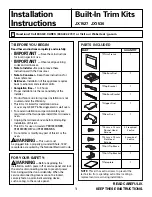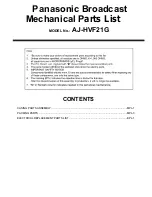
Appendix
MI3
115
19
Appendix
19.1
Determination of Emissivity
Emissivity is a measure of an object’s ability to absorb and emit infrared energy. It can have a value
between 0 and 1.0. For example a mirror has an emissivity of < 0.1, while the so-called “Blackbody“
reaches an emissivity value of 1.0. If a higher than actual emissivity value is set, the output will read
low, provided the target temperature is above its ambient temperature. For example, if you have set
0.95 and the actual emissivity is 0.9, the temperature reading will be lower than the true temperature.
An object’s emissivity can be determined by one of the following methods:
1.
Determine the actual temperature of the material using an RTD (PT100), a thermocouple, or
any other suitable contact temperature method. Next, measure the object’s temperature and
adjust emissivity setting until the correct temperature value is reached. This is the correct
emissivity for the measured material.
2.
For relatively low temperatures (up to 260°C / 500°F) place a plastic sticker (e.g.
XXXRPMACED) on the object to be measured. This sticker should be large enough to cover
the target spot. Next, measure the sticker’s temperature using an emissivity setting of 0.95.
Finally, measure the temperature of an adjacent area on the object and adjust the emissivity
setting until the same temperature is reached. This is the correct emissivity for the measured
material.
3.
If possible, apply flat black paint to a portion of the surface of the object. The emissivity of the
paint is 0.95. Next, measure the temperature of the painted area using an emissivity setting of
0.95. Finally, measure the temperature of an adjacent area on the object and adjust the
emissivity until the same temperature is reached. This is the correct emissivity for the
measured material.
19.2
Typical Emissivity Values
The following table provides a brief reference guide for determining emissivity and can be used when
one of the above methods is not practical. Emissivity values shown in the table are only approximate,
since several parameters may affect the emissivity of a material. These include the following:
•
Temperature
•
Angle of measurement
•
Geometry (plane, concave, convex)
•
Thickness
•
Surface quality (polished, rough, oxidized, sandblasted)
•
Spectral range of measurement
•
Transmission (e.g. thin films plastics)
To optimize surface temperature measurements, consider the following guidelines:
•
Determine the object’s emissivity using the instrument which is also to be used for
temperature measurements.
•
Avoid reflections by shielding the object from surrounding temperature sources.
•
For higher temperature objects, use instruments with the shortest wavelength possible.
•
For translucent materials such as plastic foils or glass, assure that the background is uniform
and lower in temperature than the object.
•
Mount the instrument perpendicular to the surface, if possible. In all cases, do not exceed
angles more than 30° from incidence.
1.800.868.7495





































